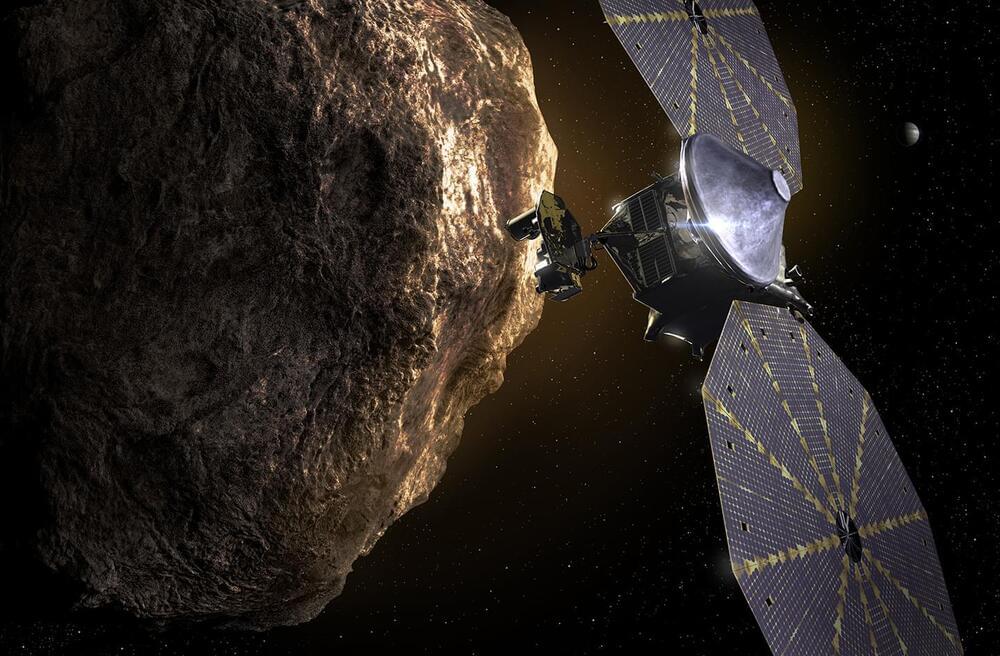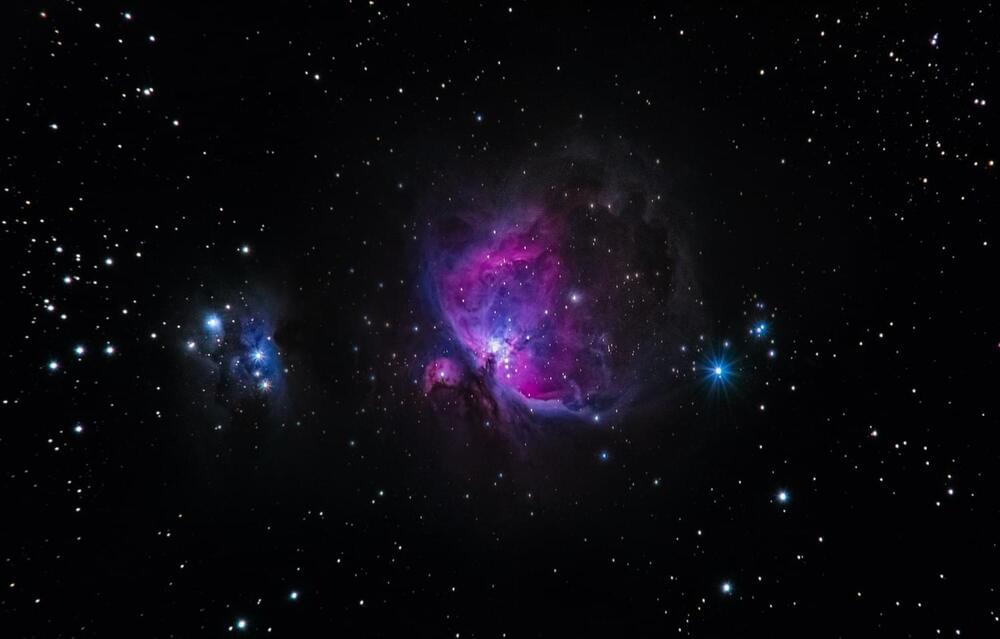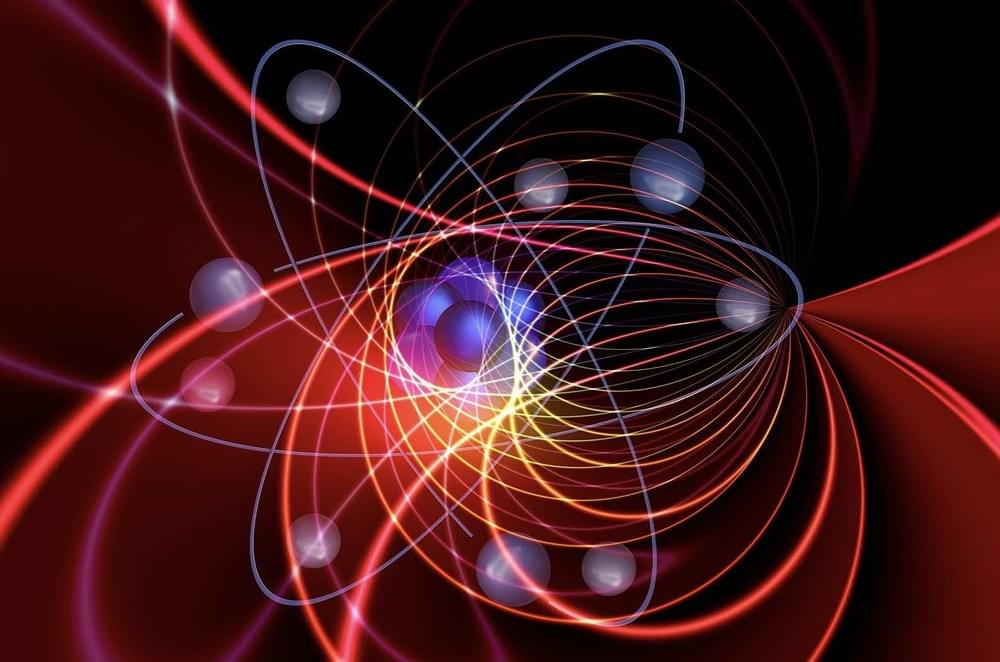Good news for NASA’s Lucy spacecraft, the solar array of which is now almost completely deployed.



Using the Victor M. Blanco Telescope, Donatiello captured minute glimpses of the galaxy in Chile, particularly at the Cerro Tololo Inter-American Observatory.
At the time, David Martinez-Delgado, another astronomer from Spain’s Instituto de Astrofisica de Andalucia, was conducting separate research regarding the lingering galaxies around Andromeda.
Upon learning the existence of the fossil galaxy, the scientists propose an argument that this could be a speck of an ancient galaxy. Its stars are said to be a former part of it.

We know the brain changes after traumatic injury, and now we have maps from mice showing what that change looks like.
A team of scientists has traced connections between nerve cells throughout the entire brain of mice, showing that distant parts of the brain become disconnected after a head injury.
The stunning visualizations of brain-wide connectivity could help scientists understand how a traumatic brain injury, or TBI, alters cross-talk between different cells and brain regions, first in mice and then in humans.
Lex Friedman interviews Google’s Deep Mind founder and CEO Demis Hassabis. In this clip Lex Friedman asks about the claim that LaMDA is sentient.
Lex Fridman Podcast full episode: https://www.youtube.com/watch?v=Gfr50f6ZBvo.
Please support this podcast by checking out our sponsors:
- Mailgun: https://lexfridman.com/mailgun.
- InsideTracker: https://insidetracker.com/lex to get 20% off.
- Onnit: https://lexfridman.com/onnit to get up to 10% off.
- Indeed: https://indeed.com/lex to get $75 credit.
- Magic Spoon: https://magicspoon.com/lex and use code LEX to get $5 off.
GUEST BIO:
Demis Hassabis is the CEO and co-founder of DeepMind.
PODCAST INFO:
Podcast website: https://lexfridman.com/podcast.
Apple Podcasts: https://apple.co/2lwqZIr.
Spotify: https://spoti.fi/2nEwCF8
RSS: https://lexfridman.com/feed/podcast/
Full episodes playlist: https://www.youtube.com/playlist?list=PLrAXtmErZgOdP_8GztsuKi9nrraNbKKp4
Clips playlist: https://www.youtube.com/playlist?list=PLrAXtmErZgOeciFP3CBCIEElOJeitOr41
SOCIAL:

A new study from the University of Cambridge reveals that electrons can simultaneously possess different energy levels.
Electrons, one of the most fundamental components of our universe, still hold a few secrets that puzzle modern scientists. Since the 1920s, physicists have worked to try and unravel the workings of these negatively charged particles, and how they behave in different situations. Now, research conducted at the University of Cambridge has shed new light on a pair of key factors–the spins and charges of electrons–revealing even more about their unique behavior.
Background: Spin and Charge
In the 1920s, scientists conducted several experiments that revealed electrons possess multiple spins. One of these, the Stern-Gerlach experiment, involved a beam of silver atoms directed at an uneven magnetic field. The magnetic field split the beam in two, revealing two different spins for the electron.
Meta researchers believe that self-supervised learning is a necessary prerequisite for AI systems that can build “world models” and can therefore begin to gain human-like faculties such as reason, common sense, and the ability to transfer skills and knowledge from one context to another.
In the quest for human-level intelligent AI, Meta is betting on self-supervised learning.
Sign up for a Curiosity Stream subscription and also get a free Nebula subscription (the streaming platform built by creators) here: https://curiositystream.com/isaacarthur.
The future may see advancements in claytronics, memory metals, and catoms to allow shapeshifting materials that can take on any form and perform any job — possibly even taking on human form itself.
Visit our Website: http://www.isaacarthur.net.
Support us on Patreon: https://www.patreon.com/IsaacArthur.
Support us on Subscribestar: https://www.subscribestar.com/isaac-arthur.
Facebook Group: https://www.facebook.com/groups/1583992725237264/
Reddit: https://www.reddit.com/r/IsaacArthur/
Twitter: https://twitter.com/Isaac_A_Arthur on Twitter and RT our future content.
SFIA Discord Server: https://discord.gg/53GAShE
Listen or Download the audio of this episode from Soundcloud: Episode’s Audio-only version: https://soundcloud.com/isaac-arthur-148927746/programmable-smart-matter.
Episode’s Narration-only version: https://soundcloud.com/isaac-arthur-148927746/programmable-s…ation-only.
Credits:
Programmable & Smart Matter.
Science & Futurism with Isaac Arthur.
Episode 336, March 31, 2022
Written, Produced & Narrated by Isaac Arthur.
Editors:
David McFarlane.
Cover Art:
The first 1,000 people to use the link will get a free trial of Skillshare Premium Membership: https://skl.sh/isaacarthur05216
Science fiction amazes us with futuristic technology and weapons, but many like the laser pistol, raygun, or lightsaber seem high-tech versions of old tech. Are such weapons possible and if so, could they have a role in future warfare?
Visit our Website: http://www.isaacarthur.net.
Support us on Patreon: https://www.patreon.com/IsaacArthur.
Facebook Group: https://www.facebook.com/groups/1583992725237264/
Reddit: https://www.reddit.com/r/IsaacArthur/
Twitter: https://twitter.com/Isaac_A_Arthur on Twitter and RT our future content.
SFIA Discord Server: https://discord.gg/53GAShE
Listen or Download the audio of this episode from Soundcloud:
Episode’s Audio-only version: https://soundcloud.com/isaac-arthur-148927746/laser-pistols-lightsabers.
Episode’s Narration-only version: https://soundcloud.com/isaac-arthur-148927746/laser-pistols-…ation-only.
Credits:
Laser Pistols & Lightsabers.
Science & Futurism with Isaac Arthur.
Episode 290a; May 16, 2021
Written, Produced & Narrated by Isaac Arthur.
Script Editors:
Andy Nelson.
Jason Burbank.
Jerry Guern https://www.youtube.com/watch?v=mxgArWbEhZg.
Matthew Campbell.
Graphics by:
Download State of Survival now: https://statesofsurvival.onelink.me/AcDU/Hacksmith.
Use my code: Hacksmith to redeem an in-game starter pack.
Upgrade to Lv6 and you will automatically enter the giveaway of an Apple iPhone 13 Pro Max.
Terms and conditions for the giveaway: http://bit.ly/3MYKqkj.
CHECKOUT THE LIGHTSABER AUCTION: https://hacksmith.store/en-ca/products/lightsaber.
GET MERCH ► https://www.Hacksmith.store.
Become a Hacksmith member get exclusive perks! ► https://www.youtube.com/channel/UCjgpFI5dU-D1-kh9H1muoxQ/join.
SOCIAL
Instagram ► http://www.instagram.com/thehacksmith.
TikTok ► https://www.tiktok.com/@thehacksmith_
Facebook ► http://www.facebook.com/thehacksmith.
Twitter ► http://twitter.com/thehacksmith.
Discord ► https://discordapp.com/invite/thehacksmith.
Merch ► https://www.hacksmith.store.
Website ► http://www.hacksmith.tech.
SOFTWARE:
PCB Design ► https://www.altium.com/asp/hacksmith.
Video Review / Collaboration ► http://r.frame.io/pZq3N
Video Editing ► Adobe Premiere.
CAD ► https://bit.ly/Solidworks4makers.
CAM ► Autodesk HSM http://bit.ly/HSMworks.
TOOLS / MACHINES:
Get a Free Pair of Wireless Bluetooth Headphones at Micro Center ► https://micro.center/61b077
Check out the Micro Center Custom PC Builder ► https://micro.center/bcae23
Check out the circuit diagram at Maker. IO ►https://www.digikey.com/en/maker/projects/the-hacksmith-real…7db170d2b7
Check out Max Brain Devices awesome video! His video inspired the concept for our project! ► https://www.youtube.com/watch?v=_z5aAvTF4xY
GET MERCH ► https://www.Hacksmith.store.
Become a Hacksmith member get exclusive perks! ► https://www.youtube.com/channel/UCjgpFI5dU-D1-kh9H1muoxQ/join.
►Early video access.
►Project design files (solidworks)
►Merch Discounts.
►Collaborate with us on our videos.
SOCIAL